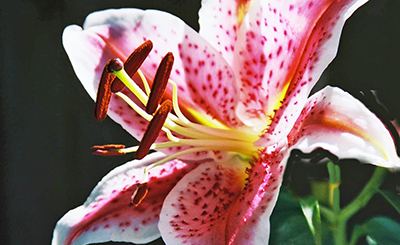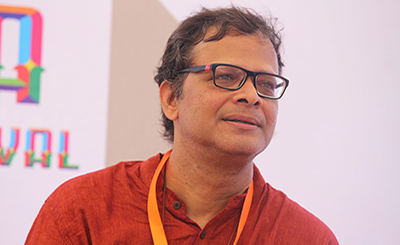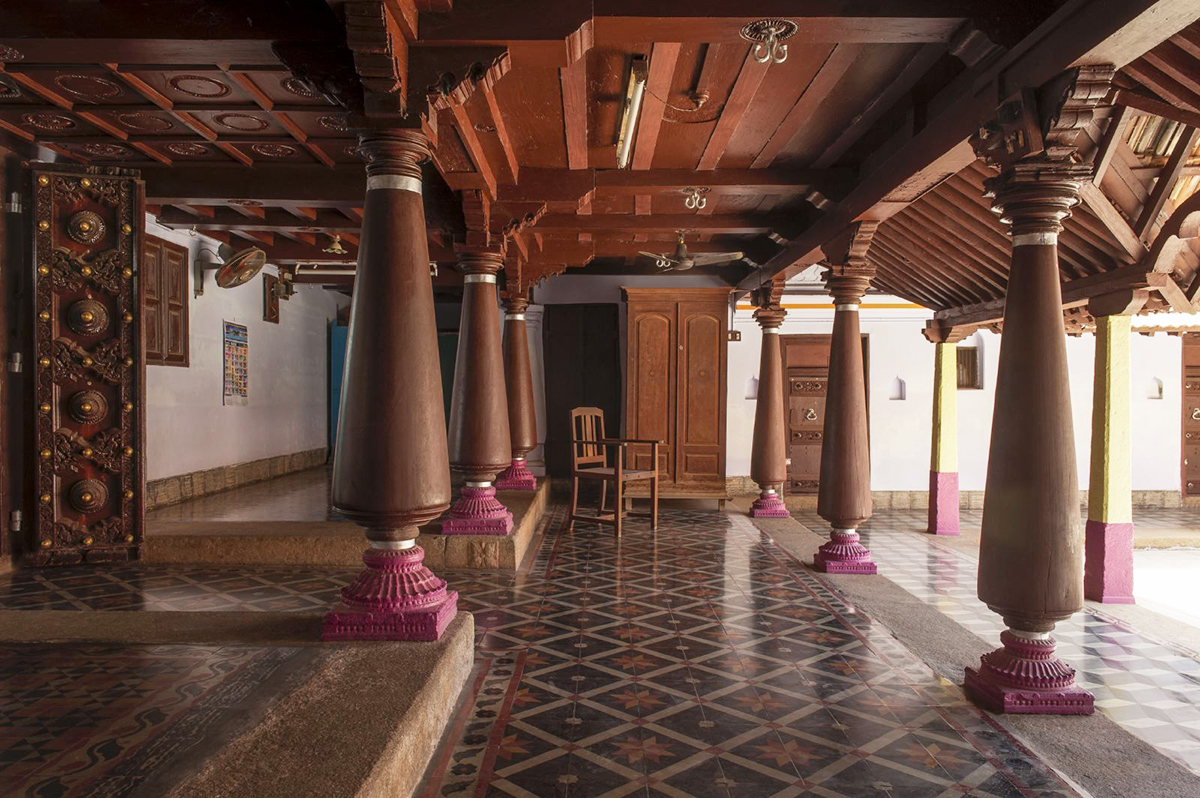
The Tamil word thinnai means a verandah or sit-out with raised stone-benches for sitting or lying down. Photo: Pinterest
The Franco-Indian Dalit novelist portrays the life and times of Dalit communities in the postcolonial world
Memories have us on their leashes. All the way. All the time. They pull at us. They tug at us.They cling to us, to life, and journey with us. Sometimes they caress us like a cool breeze on a summer’s day. At other times they rise and rush to cuddle us like waves on the shore. There are also times when memories crash-land upon us and hurt us till we cry, till we bleed, till we die. Whatever the case there is no escape from memories and nor should there be. Because memories metamorphose into stories and stories of memories, thus contributing to the genesis of all creative work. And, by all counts, the strongest memory that continues to haunt most populations in most regions of the world is the memory of their colonial past.
Writer Ari Gautier’s new novel The Thinnai (Hachette India) is one such work that takes us on a journey of memories and stories of memories. It is a historical novel set in the Pondicherry of the the 70s and 80s. The novel takes off with a Prologue where the narrator revisits his past and walks down memory lane, indulging in stories from the near and the distant past even as he celebrates the lives of the storytellers themselves. Consequently, he is sometimes part of the story, sometimes not and at other times a bridge between one, the stories, two, the storytellers, and three, between the stories and the storytellers. What a fascinating way of telling one’s story!
The technique of starting the novel in the present and surfing on memories leading into the past that stands in stark contrast with the present lying in ruins is clearly cinematic: “Once the house had appeared enormous. Now, beside the new grey buildings towering above it…it seemed a miserable shack. The old naga tree stretched its branches towards eternity, covering the roof with sickly yellow leaves.” And Three-Balls Six Faces, the “lone survivor”, exclaims: “Look what I’m reduced to: playing Sappani! To think I was once the great MGR (Tamil superstar M.G. Ramachandran, who wooed his fans with, “Behold the treasure of mine Creole-Pondicherry.”): now I have to play Sappani the cripple (the crippled hero of the 1977 film 16 Vayathinile, played by film star Kamal Hassan).”
This fusion of stories, of the personal and the public, sets the tone of the book: “As I closed my book, with its final image of Cacofonix tied and gagged at the root of a mistletoe tree, I realized that Kurusukuppam was like the Gallic village in the comic (Asterix).” Voila! And with that the narrator throws us into the middle of the cacophony of the village of Kurusukuppam beginning with the twin origins of its name; one, a fish found in abundance in the area and, two, a cross atop its church. Having started as a shelter for fishermen, it had evolved into a village of fishermen or low-caste people (Unhygienixes?!).
The narrator goes on to sketch the geographical map of his “Gallic” village which is also indicative of its social, economic and cultural landscape: “Kurusukuppam had only four main streets. The first, which passed from east to west, was an extension of Pondicherry’s Cours Chabrol, but became a nameless road long before it got to us …The second street was Rue Pappamal Covil, which started at Boulevard Nord and stopped in front of our church, Saint Francis of Assisi. The third was an extension of Gingee Salai that passed through Kurusukuppam and gave out by the cemetery. The final street, perpendicular to the other three, was Rue Avocat Chinnatamby. It ran from our house to Selvaraj Chettiar’s. Insignificant little alleyways that the postmen were either ignoring or hadn’t yet discovered made up the rest of this neighbourhood (emphasis added to underscore the marginalised and “nameless” status of the low-caste Dalit community).
In many ways, Kurusukuppam reminds us of Arundhati Roy’s Ayemenem in The God of Small Things (1997), caught in the colonial crossroads with its History House and the Meenanchal river reduced to a drainage line and the sea swelling with shit and covering the village with a hat of shit-smell. I can imagine Kurusukuppam have its own “hat” of smell with only two houses in the village having toilets. The details are too raw and starkly not to draw our attention to the plight of the Dalit community in Pondicherry:
Kurusukuppam was one of the poor neighbourhoods beyond the city boulevards. A house made of stone would have seemed a palace among the hovels, some of which didn’t even have doors. A piece of old jute cloth protected the privacy of the families who lived there. On rainy and windy days, it writhed back and forth pitiably, letting sodden, miserable sighs escape from within. The interiors of these houses were so small that their inhabitants spent most of their time in the narrow and winding dirt road rather than in their homes. Their houses were cramped, with no interior walls: there was a single room for the family. This room was often divided by a partition that didn’t reach the ceiling, behind which the meals were prepared; it offered the illusion of having a kitchen. The bathroom behind the house was a shower tray, screened by coconut leaves. These cottages were so small that the men slept on the thinnais — or even in the street — to leave room for their wives and children.
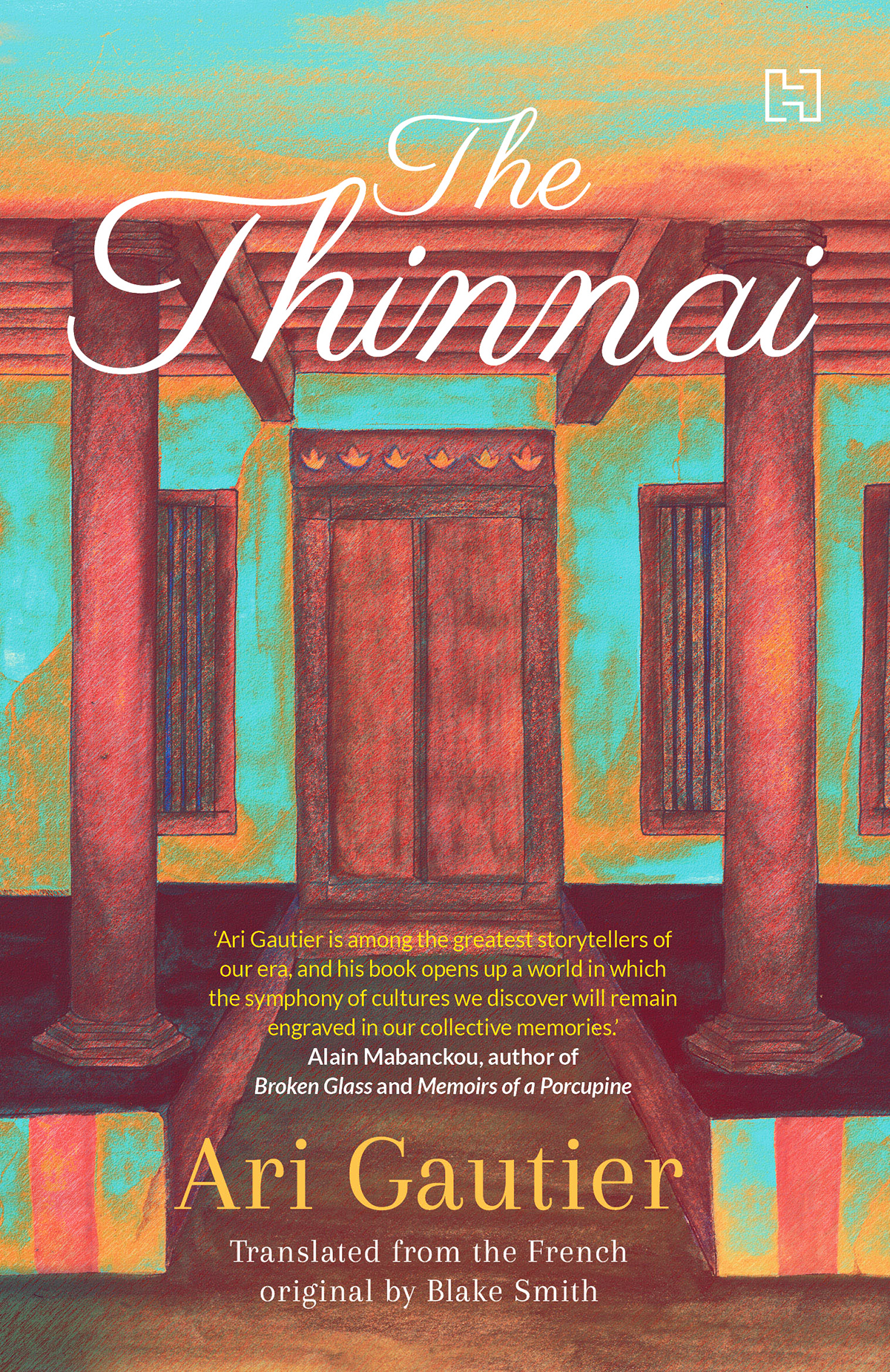
The Thinnai
By Ari Gautier
Translated from the French original by Blake Smith
Hachette India
pp. 200, Rs 399
These true-to-life accounts of the living conditions of the Dalit populations come from Gautier’s own experience as part of the Dalit community of Pondicherry. His ancestors had embraced Catholicism and had also opted for French citizenship as long ago as the 1880s in order to escape the stigma and the physical and mental suffering caused by untouchability. His father had been a soldier in the French army. His mother was from Madagascar. In fact, Gautier was born in Madagascar and has lived in India and France. Most of these autobiographical elements find their way into The Thinnai:
On 3 January, 1882, my great-grandfather Nalanda presented himself at Pondicherry’s newly built City Hall…to make an important decision. Two hundred years ago, one of his ancestors had converted to Catholicism to escape untouchability. Now Nalanda was about to dive into another new world, seeking a better life for himself and his children. He would become a French citizen…He wanted to give his family a better future. He was ready. What was he giving up? A vile, shameful condition had been imposed upon him. Would it be such a sacrifice to have a new name, one that didn’t have any caste connotations? Didn’t it make sense to pursue a better status, even if it was a foreign one?… On his way back, his steps were more assured. He felt lighter. Centuries of abjection and abomination had been erased by a bit of ink on his thumb. He couldn’t stop marvelling at this magic; pushing his thumb on a sheet of paper had changed his destiny.
The title of the book The Thinnai is of great significance both in its literal import as well as its metaphoric essence. Literally, the Tamil word thinnai means a verandah or sit-out with raised stone-benches for sitting or lying down. This space also doubles up as a brief stopover for tired-strangers. Most traditional houses in India have some such structures, of course in varying shapes and sizes. With modernisation and the fast-forward impact of Westernisation, sadly the thinnai culture is fast fading. The author demonstrates great courage in using a non-English word as the title of his book, both in the French original as well as the phenomenal English translation by Blake Smith because the entire import of the book lies in the many denotations and connotations as well as the shape, sound and sense of the word thinnai. Metaphorically, it represents the “hybrid” nature of postcolonial life as conceived by Homi Bhabha; a “liminal” space to be negotiated by the actors involved.
“Thus it was hardly uncommon to see two nationalities rubbing uncomfortably against each other within the same family…My father frequented the Cercle de Pondichéry, the bar Américain, hôtel d’ Europe and hotel Qualithé, while my uncle was usually seen in Sarayakadai No. 1 or Kallukadai No. 3… My father knew the language of Molière as well as that of Thiruvalluvar, but my uncle only knew Tamil. My father was French and my uncle was Indian.” Sadly, this historical divide resonates with every individual, every society and every nation ever colonised by a foreign power.
In The Thinnai, Gautier offers the reader one of the the most colourful, flavourful and carnivalesque depictions of postcolonial Pondicherry.The opening line of the novel, “Gilbert Thaata came to our thinnai on King’s Day, 14 July” with its dense cultural commingling of Indian appellations and spaces and French names and festivities holds much of the core of what the book eventually unfolds: “Besides the Bolsheviks and a half-naked fakir (Gandhi), there were also boys named Nehru, Mountbatten, Netaji, Benito and Adolf…Early in the morning, the street would awaken to the smell of… coconut chutney [and] idlis. When evening came, the smell of kavapus, and bhajis of fish, shrimp and eggs, perfumed the neighbourhood. The locals and passers-by gathered around [the] modest stand and left with their hands full of food wrapped in newspaper.”
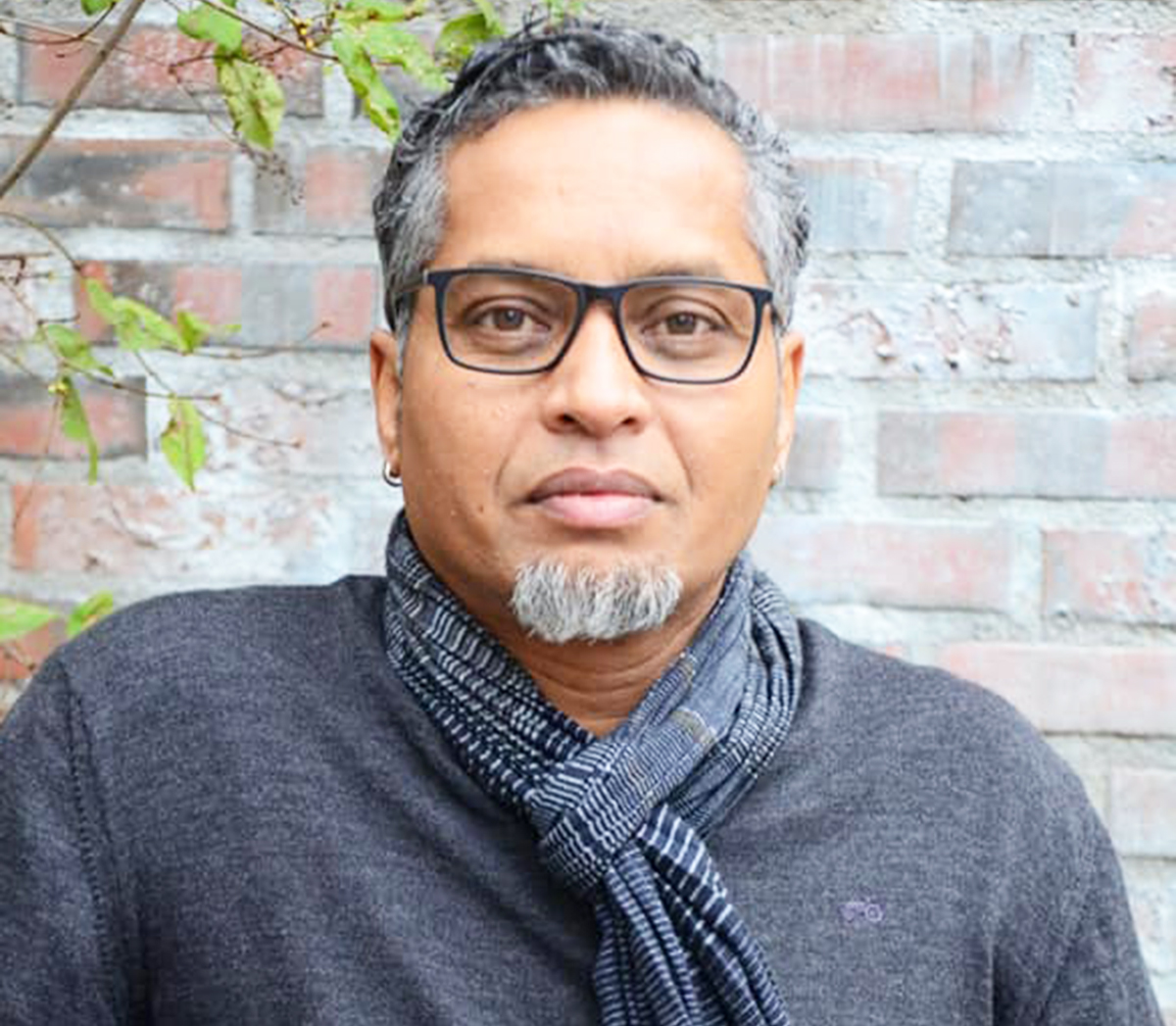
Ari Gautier. Photo courtesy of the author
The thinnai provides the perfect ambience for all the storytelling: “Gilbert Thaata knew his art. His story, with sips of whisky and puffs of his cigar, held us spellbound. We were dazzled by his memory. How could he recall the smallest details of events that had happened centuries ago?…Gilbertֹ’s voice echoed in the night. Here and there snores rose from neighbours’ houses. The dogs were now asleep. The whole neighbourhood was asleep. There was only the rustle of the naga’s leaves in the wind…I was already cast away on a coral reef of some dream kingdom. Pirates had captured the ship of my consciousness and taking it away to unknown shores.”
Add to this the drama of drunken husbands, disappearing husbands, flirtatious husbands and its lesser mortals getting drop-dead drunk and having to be literally dragged home across the dirt roads by their loved ones. And their names are just as theatric: “Kurusukuppam’s inhabitants had a mania for giving nicknames: Three-Balls Six-Faces, Edouard the Cripple, Joseph One-and-a-Half-Eyes, Emile Kozhukattai-Head…Usually, these names marked some singular physical trait: Three-Balls had three testicles, Edouard limped and Joseph squinted [and not to forget the flirtatious Manickam Annan’s Mop head, Baldy and Moustache, despite the fact that the Communist heroes were only faces on a poster and Asamandi Baiyacaca Sonal’s uncountable (unnameable?) children and grandchildren]…The real names got lost in the maze of collective memory, leaving only nicknames that followed people to their graves.” Gautier’s description of the people, places and events of Kurusukuppam are Fauvistic, to say the least and achieves what Rushdie refers to in Midnight’s Children (1981) as “chutnification of history.”
Now to this caste and cultural mix add the hippie culture: “[I]n 1968, when Auroville was created, the horrified people of Pondicherry witnessed the arrival of a horde of strangers: dirty, bearded, long-haired, shabby and barefoot. They wandered the city shirtless in unkempt kailis that showed their skinny legs as Pondicherrians looked on in disgust. Those who were accustomed to the well-dressed Europeans frequenting private clubs… were shocked by these hippies meditating naked on the beach. The veterans who had fought in Indochina, Algeria and in other dirty wars of lanation could only listen in bafflement to these drugged-up messiahs preach peace on earth.”
The naga tree in the novel is by no means an insignificant marker. It stands testimony to the happenings in the village. In India, trees play an important role in the life of a village. Even as they season with the seasons, they stand witness to history like no other living entity. In most places in India, especially in rural India, trees played, and still play a definitive role in its oral maps, especially when giving directions, deciding upon a meeting point etc. In fact, even graves play a similar role in the cartography of Indian villages; one can provide directions saying the paddy fields near so-and-so’s grave. The Bade Saab gori (tomb) in my ancestral village Vidapanakal Kothakota in Andhra Pradesh is a remarkable example of the same.
One might think that the grand old impoverished Frenchman Gilbert Thaata who brings to life the narrator’s thinnai with his endless yarn of stories woven around the precious diamond, the Stone of Sita is the protagonist of the novel considering that “three centuries of French rule had left its marks on the collective psyche…You couldn’t treat a European like an Indian. Gradually [Gilbert Thaata had] acquired a status in the neighbourhood.” The narrator’s creole servant, Lourdes who is forbidden by her master from speaking creole could also be a protagonist of sorts. But the truth is, the hero of the novel is the thinnai, and the thinnai alone. The rest of the cast — including de Cruz, called Digriss by his neighbours, the latest resident to embrace life at the thinnai as presented in the Epilogue indicating that the story of the thinnai continues generation after generation — are only human interventions that make the thinnai a microcosm of postcolonial Pondicherry. No wonder the narrator exclaims, “If there was anything our neighbours envied us, it was our thinnais.”
The Thinnai is in itself the thinnai where races, cultures, languages, flags, foods, drinks, brothers and all else converge to celebrate the colours of life, making it the most defining and definitive of postcolonial thinnais ever! Thus, with The Thinnai, Gautier breaks new ground in world literature as the first Franco-Indian Dalit novelist proudly portraying the life and times of Dalit communities in the postcolonial world.
More from The Byword
Comments
*Comments will be moderated




